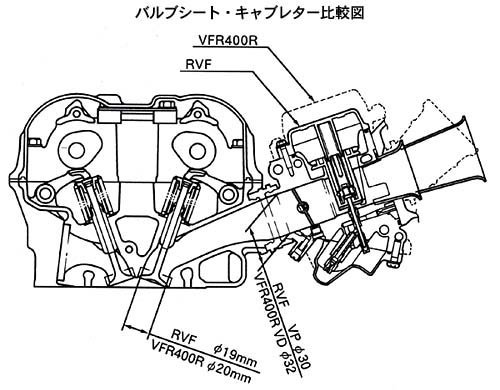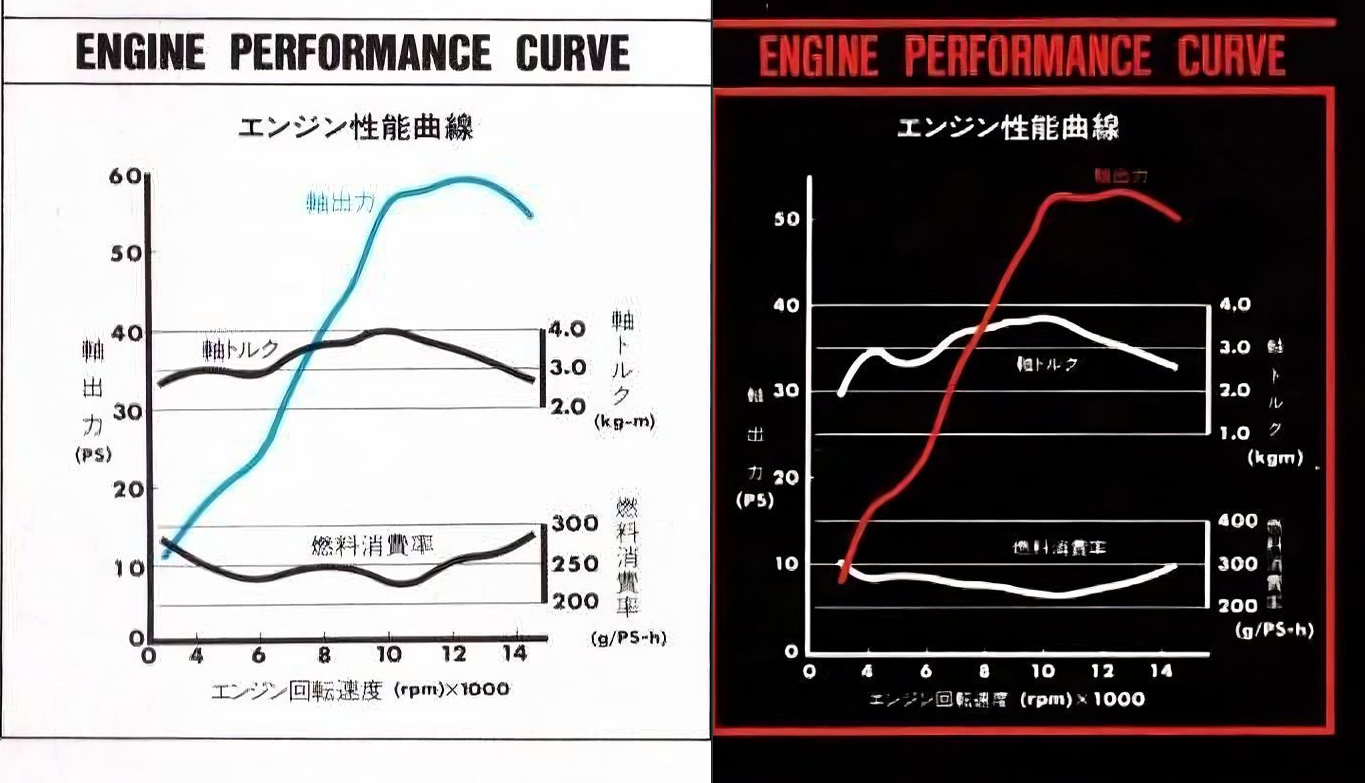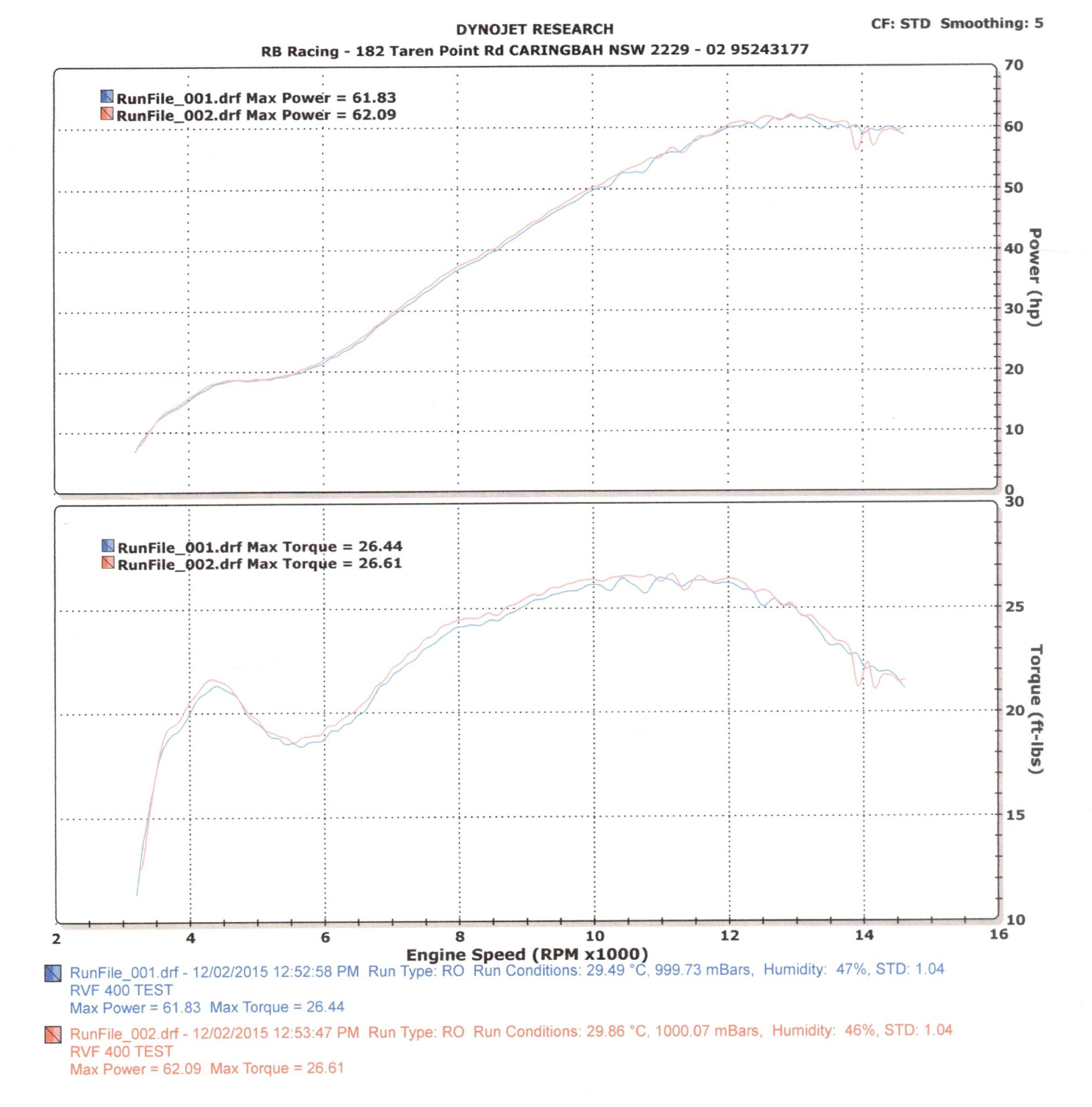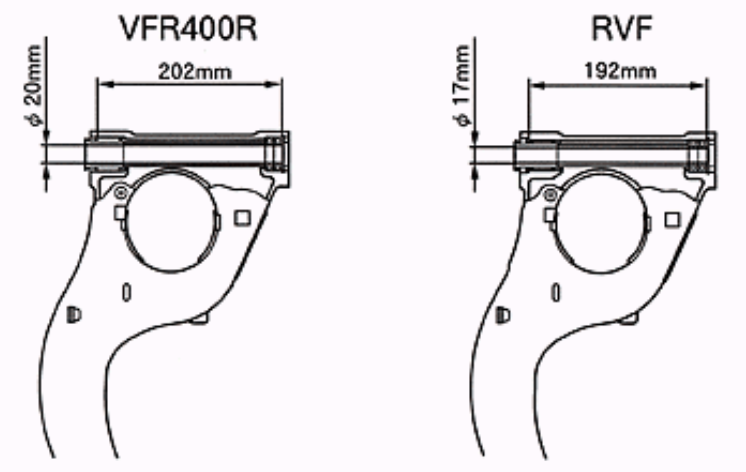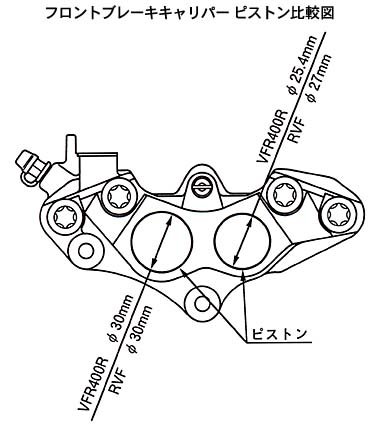Differences between the Honda VFR400 NC30 and RVF400 NC35
At first glance you’d be forgiven for thinking that there are no real differences between the VFR400 and the RVF400 other than the: headlights, fairings, front forks and as is widely known, the slightly smaller carburettors on the RVF400 and deficit in claimed power of the RVF400 compared to the VFR400.
If you take a closer look, you’ll notice that there are in fact quite a few more changes than first meet the eye, and more again, once you start examining internal components of the bike.
We’ve prepared this article to set out the most appreciable and noteworthy differences between the two models.
Engine and Gearbox
Engine
There are two widely known changes between the engines of each model. One is the claimed power figures. The VFR400 was released Honda claimed it made 59hp at 12,500rpm and 4.0kgm (39nm) of torque at 10,000rpm, while the RVF was said to make 53hp and 3.7kgm (36nm) at the same RPM. In reality, if you upgrade the exhaust system (headers and muffler) on the NC35, you will get the same power and torque (peak) as the NC30.
The other well-known difference is the carburettors, or more specifically, the size of the carburettor intake from 32mm to 30mm, which Honda said was changed to improve response. However, the carburettors are quite different in general design and another notable difference are the slides which were changed to a semi-flat side design, also intended to improve response. The intake valve port diameter was also reduced from 20mm to 19mm to increase intake velocity, while the valve timing was slightly adjusted to improve throttle linearity.
You might think this is the likely the extent of the changes to the engine, however the pistons were also altered to reduce their weight by 3%.
Anecdotally, the RVF is reported to have better midrange response, while the VFR is said to have better top end.
One of the more noticeable aesthetic differences between the bikes are the inclusion of intake air ducts on the RVF400, which sit between the front cowl and the tank. These certainly look racy, but many people suggest they aren’t functional as they aren’t an ‘air ram setup’. Despite that belief, Honda never seems to have actually marketed it as being an air-ram style intake, but rather a ‘NASA duct type’. According to the big H, the duct directs air to the ‘air cleaner’ to prevent increased intake temperatures and ensure an optimal air/fuel ratio. Whether the ducts actually make any appreciable difference, I couldn’t say.
Power curves
While the RVF400 is known to have better mid range, the VFR400 has higher average torque between 4,000rpm and 10,000rpm. This anecdote may come down to responsiveness rather than torque.
As you’ll see in Honda’s diagrams below, the RVF400 has a torque dip between 4,000rpm and 6,000rpm (much like Toyota’s GT86) with torque peaking at 3.0kgm (29.4nm) at 4,000rpm before dropping to about 2.7kgm (26.4nm), and then steadily rising from there back to about 3.0kgm (29.4nm) at 6,000rpm where it continues to rise steadily until 10,000rpm. By comparison, the VFR400 makes 3.0kgm (29.4nm) at 4,000rpm and continues to make about that amount of torque through to 6,000rpm where torque begins to climb noticeably.
This is borne out in the dyno of our RVF400, which was done several years ago, before we bought the bike. You’ll see that our NC35 makes about 22ft-pd of torque at 4,000rpm at the wheels (29nm), then dropping to 18ft-pd (24.4nm) before hitting 22ft-pd again at 7,000rpm. The bike was fitted with a full Tyga system and 120 main jets at the time, and the figures referred to don’t include provision for drivetrain losses, which are between 10 – 15%. What you will notice though, is that the torque dip lasts for longer on our bike, by an additional 1,000rpm. We think this is likely attributed to the fact that there weren’t any header gaskets installed at the time, causing an exhaust leak while it was being dyno’d. From previous experience, exhaust leaks result in distinct decreases in torque at lower rpm ranges.
What this comparison fails to take into account is the different in gearing between the two bikes. Gears 1 – 3 in the RVF400 are shorter than the VFR400 by about 11%, 7% and 3% respectively. Accordingly, the gearing will to some extent make up the torque deficit in this rpm range on the NC35, compared to the NC30, when you’re in gears 1 -3.
Gearbox
One of the biggest complaints of the VFR400 NC30 was its very long first gear that enabled speeds approaching 100km. That is an exceptionally long first gear for a 400cc bike and it’s said to have been designed that way to emulate its father, the VFR750 RC30. Well, Honda listened, shortening the first three gears by 11%, 7% and 3% respectively. You may know that while the first three gears were shortened, the final drive of the RVF400 was made slightly longer (rear sprocket has 38 rather than 40 teeth), such that although the top three gear ratios didn’t change, their effective ratios did – making them slightly longer by 1%, 6.4% and 1% respectively.
This is somewhat surprising because the theoretical top speed in 6th gear was, in the VFR400, already higher than you were ever likely to reach. However, it is possible that these gears were lengthened to improve fuel economy.
Chassis
Both bikes share an aluminum twin spar frame that looks quite similar. However, the RVF frame is slightly thicker for increased rigidity, and the engine mounting points are different (see below).
The single sided swingarm on both bikes, while designed by Elf differ in size by a small amount. This is particularly important if you’re swapping swingarms, because they aren’t inherently compatible with the frames of each other.
Honda also raised the height of the clip-on handlebars by 10mm, moved them closer to the rider by 24mm, and made them slightly 10mm narrower. One benefit of the slightly narrower width is that lane filtering, if you’re lucky enough to live in a State where it’s legal, is easier with a narrower bike. On the flip side, narrower clip-ons will reduce the amount of leverage you have available to change direction through the handlebars.
Suspension
While the VFR400 makes do with conventional front forks, the RVF400 received Showa upside down (USD) front forks with some adjustability.
The difference between the two isn’t what you would call profound, particularly at lower speeds, but the RVF400 does have the better set up which becomes more noticeable when riding the bike hard. It also allows the RVF400 to be considerably more upgradable compared to the VFR400. Not only that, personally (although we are bias) the RVF400 look the business, with those gold upper fork tubes. The drawback of those tubes is that the gold is usually quite faded and because the finish is anodized, its very difficult to restore.
Rear wheel
A notable change was from an 18 inch rear wheel on the NC30 to a more common 17 inch wheel on the NC35. This allows for far greater tyre choice and is a somewhat popular mod for NC30 owners. Aside from the change in rim size, Honda claims the weight of the rear wheel reduced by a whopping 1.2kg! For an OEM wheel, particularly a motorbike wheel, that is an astonishing difference in unsprung mass.
Brakes
Those with a keen eye will know that the front brake calipers changed. On the VFR400 you have some discreet looking four piston calipers and the RVF400 has some every so slightly more modern looking four piston calipers, supposedly borrowed from the RC45, with a Nissin logo on each side of the caliper. The difference between the calipers is, other than the visual difference, confined to a slight increase in the piston sizes.
Other changes
Although a very minor change from a percentage perspective, the RVF400 (183kg wet) is lighter than the VFR400 (185kg wet) by 2kg. We will soon be publishing an article on the weight reduction measures we’re implementing on our RVF400. Although often expensive, weight reduction is one of the most effective ways to improve performance across every domain (acceleration, handling, fuel economy etc.).

